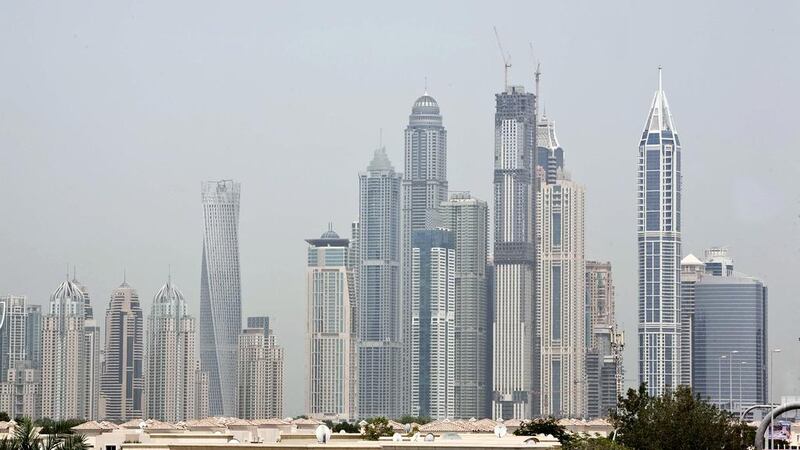ABU DHABI // UAE's skyscrapers have the most non-occupiable space in the world, according to a report measuring spires and other height-extending additions.
The Chicago-based Council on Tall Buildings and Urban Habitat reported that the UAE's 19 tallest buildings have an average of 19 per cent of their total height unoccupied, with five of the top-10 skyscrapers with the tallest spires in the world located in Dubai.
Burj Al Arab was listed as the skyscraper with the highest non-occupiable-to-occupiable height ratio in the world, with 39 per cent (124 metres) of it unoccupied.
The world's tallest building, Burj Khalifa, has the greatest unoccupied extension, at 244m, or 29 per cent of its total height.
On its own, Burj Khalifa's spire would be an impressive stand-alone skyscraper, according to the council - it would be the 11th tallest building in Europe.
Without the height extensions many of the world's tallest buildings would be significantly cut down to size, leaving China's CITIC Plaza, in Guangzhou, the tallest of them all at 390m.
China came second to the UAE in the ratio of non-occupiable-to-occupiable buildings, with 24 of its skyscrapers using spires to boost their heights by an average of 14 per cent.
Two New York towers also made the top-10 skyscrapers with the tallest spires and the city will add a third when the One World Trade Centre is completed in 2014.
The council conducted the study after it noticed a fair amount of Saudi Arabia's one-kilometre-high Kingdom Tower, which is set to surpass Burj Khalifa as the world's tallest tower in 2017, seemed to be an unoccupied spire.
tsubaihi@thenational.ae
UAE skyscrapers have the world's greatest unusable space
Five of the world's top 10 skyscrapers with the tallest spires are located in Dubai.

Editor's picks
More from the national





